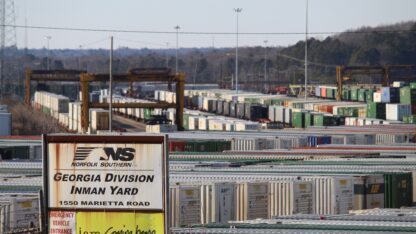A $973 million deepening of the Savannah River shipping channel that links Savannah’s busy seaport to the ocean has been completed 6 1/2 years after dredging began, the agency overseeing the project said Wednesday.
The milestone was announced by the Army Corps of Engineers, which spent more than two decades working on the Savannah harbor expansion that included years of studies, environmental reviews and planning before contractors began scooping mud and sediment from the river bottom.
The project required deepening a 40-mile (64-kilometer) stretch of the Savannah River between the port and the Atlantic Ocean. Dredging began in September 2015 as Savannah and other U.S. ports raced make room for larger cargo ships arriving through an expanded Panama Canal.
Griff Lynch, executive director of the Georgia Ports Authority, said last month that the Savannah harbor’s new depth of 47 feet (14 meters) — 5 feet (1.5 meters) deeper than it was before the dredging project began — should be sufficient for about decade before planners need to consider another round of dredging.
“The 47 feet should last a long time,” Lynch said. “But quite frankly, the next thing we need to be looking at is widening a little bit. Not the whole river, but in certain spots to allow these wider ships to pass.”










